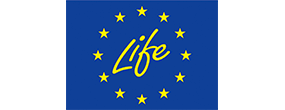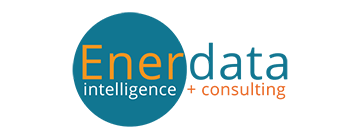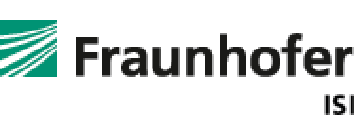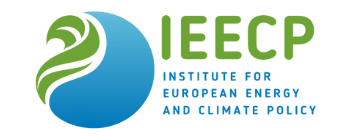Overview
In 2022, Slovakia´s final consumption was 9.85 Mtoe, which represents a similar value to 2000 (decrease by only 0.3% compared to 2000). The largest share of final consumption was represented by industry (30% in 2022). Consumption in services and agriculture declined both in absolute terms and in relative terms. By contrast, the share of final consumption in transport has increased from 14.4% in 2000 to 26.9% in 2022. Household consumption was 1.2% higher in 2022 than in 2000.
Figure 1: Final energy consumption by sector (with climatic corrections)
Source: ODYSSEEThe energy efficiency of final consumers measured by ODEX has improved over the period 2000-2022 by 2.4% on average. Significant improvement was achieved in services (4.1% per year) and in industry sector (3.1% per year). For households, energy efficiency progress was 1.9% per year. Energy efficiency in transport improved on average by only 0.9% per year.
Figure 2: Technical Energy Efficiency Index
Source: ODYSSEETable 1: Sample of cross-cutting measures
| Measures | NECP measures | Description | Expected savings, impact evaluation | More information available |
|---|---|---|---|---|
| Recovery and resilience plan of the Slovak Republic | Yes | The main strategic document defining policies, priorities, milestones and framework measures needed to support the Slovak economy for its recovery after the covid pandemic and to react to the identified main challenges and systemic shortcomings of the Slovak economy. | 2.14 PJ | Link |
| Long-term renovation strategy of the building stock (2020) | Yes | A long-term renovation strategy of the building stock was prepared as strategic document to support the renewal of the national stock of residential and non-residential buildings, both public and private, with a view to achieving a highly energy-efficient and decarbonised building stock by 2050. The strategy forms part of the Integrated National Energy and Climate Plan of the Slovak Republic. | 2.14 PJ | Link |
| Integrated national energy and climate plan for the years 2021 - 2030 | Yes | The main strategic document defining energy and climate policies and objectives for the period 2021-2030 | 1.28 PJ | Link |
Buildings
In 2022, space heating accounted for 71% of the households’ consumption, a share similar to 2000. Among the other uses, water heating consumption accounted for 45.5%, electric appliances and lighting for 35.5% and cooking for 19%. In period from 2000 to 2022, hot water consumption decreased by 3.3%, consumption of cooking decreased by 8.6%, but consumption of electric appliances and lighting increased by 4.6%.
Figure 3: Energy consumption of household space heating per m2 (with climatic corrections)
Source: ODYSSEE; ambient heat included.Figure 4: Energy consumption per dwelling by end-use (except space heating)
Source: ODYSSEEHouseholds’ consumption was almost at the same level in 2022 as in 2000 (2.59 Mtoe in 2000 and 2.69 Mtoe in 2022). This is the result of two opposite trends. On the one hand, energy savings, represented by the significant insulation of dwellings, the increase in the price of energy associated to better energy management, more efficient electrical appliances etc, reduced consumption by 1.07 Mtoe. On the other hand, several factors contributed to raise consumption: increase in the number of dwellings (0.15 Mtoe), increase in the size of dwellings (0.18 Mtoe) and other cumulatively significant factors such as a partial change in the way households are used (since the corona crisis).
Figure 5: Main drivers of the energy consumption variation in households
Source: ODYSSEE; ambient heat included.The final consumption in services, in the observed period 2000-2022 it decreased from 2.2 Mtoe to 1.3 Mtoe. In terms of per employee, it was a significant decrease (by -4.2% per year). On the other hand, the consumption of electricity per employee increased (on average by 0.7%), due to the expansion of electrical appliances, especially IT technology.
Figure 6: Energy and electricity consumption per employee in services (with climatic corrections)
Source: ODYSSEETable 2: Sample of policies and measures implemented in the building sector
| Measures | NECP measures | Description | Expected savings, impact evaluation | More information available |
|---|---|---|---|---|
| Replacement of white goods | No | Support for the sale of energy-saving products, handing over a very old product to electrical waste to the Envidom collective system. Energy savings are calculated for refrigerators and freezers (including built-in and free-standing products). | 0.12 PJ | Link |
| Improving the energy efficiency of single-family homes | No | Financial support for renovation of single-family houses, which in this way will take on a significantly higher pace and energy level than has been the case so far. The support will lead to implementation of energy efficiency renovation measures at single-family houses and the introduction of selected green elements in the process recovery. | 0.37 PJ | Link |
| Improving energy efficiency in non - residential buildings to reduce greenhouse gas emissions | Yes | The aim of the measure is to improve the energy efficiency of non-residential buildings in order to achieve a highly energy efficient and decarbonized building stock and thus contribute to reducing energy poverty and meeting the binding targets for reducing greenhouse gas emissions by 2030. Depends on availability of financial sources for various instruments (see general description). | 0.37 PJ | Link |
Transport
Consumption in transport between 2000 and 2022 grew by an average of 2.6% per year. At present, trucks and light vehicles represents 49% of that consumption, cars 44%, buses 4%, rail transportation 2% and motorcycles 1%.
Figure 7: Transport energy consumption by mode
Source: ODYSSEEIn 2000, cars represented 66% of the passenger traffic, buses 25% and rail 9%, while in 2022 cars increase their share, accounting for 78%, bus 12% and rail 10%. It means that transport by passenger cars is increasing in Slovakia and the transfer of persons by train has been strengthened at the expense of bus transport. This is also caused by the state's policy favouring rail passenger transport (free travel for students and retirees). Such an advantage, however, does not apply to bus transport services. One of the main factors of the dominance of individual car transport is the large gaps in the quality of the provided transport services in public passenger transport.
Figure 8: Modal split of inland passenger traffic
Source: ODYSSEEIn the period 2000 - 2022, freight transport by rail decreased by 28 % points (pp), from 58% to 30% of total traffic, the share of water transport decreased by 4 pp, but the share of freight transport by road increased significantly by 32 pp.
Figure 9: Modal split of inland freight traffic
Source: ODYSSEEThe overall increase in transport consumption from 1.44 Mtoe in 2000 to 2.66 Mtoe in 2022 (+1.22 Mtoe) was mainly due to an increase in passenger and freight transport (+0.26 Mtoe) and to a significant shift in freight transport from less energy intensive modes (rail and water) to road transport (+0.62 Mtoe). These trends were only partially offset by energy savings (e.g. improved fuel efficiency of engines), which reduced consumption by about 0.37 Mtoe.
Figure 10: Main drivers of the energy consumption variation in transport
Source: ODYSSEETable 3: Sample of policies and measures implemented in the transport sector
| Measures | NECP measures | Description | Expected savings, impact evaluation | More information available |
|---|---|---|---|---|
| Support for bicycle transport | Yes | The aim of the measure is to increase the rate of use of bicycle transport within urban areas of towns and municipalities as a relevant mode of transport. (see general description) | 0.11 PJ | Link |
| Promoting energy efficient transport | Yes | The aim of the measure is, respecting the principle of technological neutrality, to motivate natural and legal persons to purchase such vehicles, components and installations that contribute to meeting the objectives of energy efficiency, RES and emission reductions. Covers infrastructure but also vehicles (see general description). | 0.11 PJ | Link |
| Renewal and modernization of the vehicle fleet - rail transport | Yes | The aim is to reduce the energy intensity of transport by increasing the attractiveness of public passenger transport by renewing and purchasing new vehicles for public rail passenger transport and urban rail public transport, thus creating conditions for sustainable regional and urban mobility. (see general description). | 0.11 PJ | Link |
Industry
The average annual decrease for the entire monitored period 2000 - 2022 was 0.5% per year. The consumption of energy-intensive industries (steel production, chemical industry, non-metallic materials production, non-ferrous metal production, and paper and pulp production) fell from 73% in 2000 to 71% in 2022.
Figure 11: Final energy consumption of industry by branch
Source: ODYSSEEUnit energy consumption in the production of steel decreased by an average of 0.84% per year over 2000-2022, but in the production of paper and cellulose it increased by an average of 2.4% per year.
Figure 12: Unit consumption of energy‐intensive products (toe/t)
Source: ODYSSEETotal industry consumption for the period 2000-2022 decreased slightly from 3.37 Mtoe to 3 Mtoe (-0.37 Mtoe). The significant activity of industry in this period increased consumption by 2.78 Mtoe was more than ofsset by structural changes to less energy-intensive industries (-0.62 Mtoe) and significant energy saving measures (- 2.42 Mtoe).
Figure 13: Main drivers of the energy consumption variation in industry
Source: ODYSSEETable 4: Sample of policies and measures implemented in the industry sector
| Measures | NECP measures | Description | Expected savings, impact evaluation | More information available |
|---|---|---|---|---|
| Implementation of energy management, environmental management and EMAS systems in companies | Yes | The aim of the measure is to identify the potential for energy savings and a systematic approach to energy management at the level of individual entities of the national economy through the implementation of energy management systems, environmental management or EMAS and the resulting monitoring of energy efficiency in the entity itself. | 0.14 PJ | Link |
| Increasing energy efficiency and reducing emissions in companies in a competitive way | Yes | Support for an implementation of investment projects in order to reduce energy intensity and CO2 production. Its aim is to provide support for projects only to the extent necessary for their implementation, which will also result in significant savings of public funds. | 0.41 PJ | Link |
| Support for energy audits for small and medium-sized enterprises (SMEs) | Yes | The aim of the measure is to support the implementation of energy audits in SMEs. The measure does not include support for the implementation of measures identified by the energy audit. | 0.14 PJ | Link |





